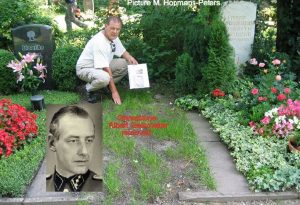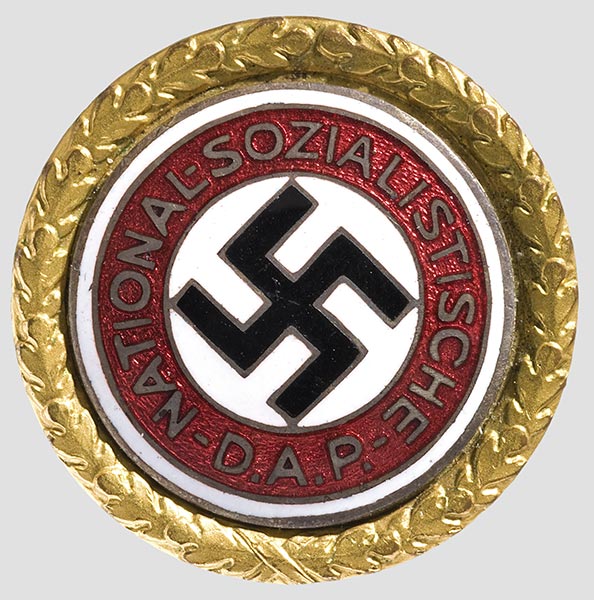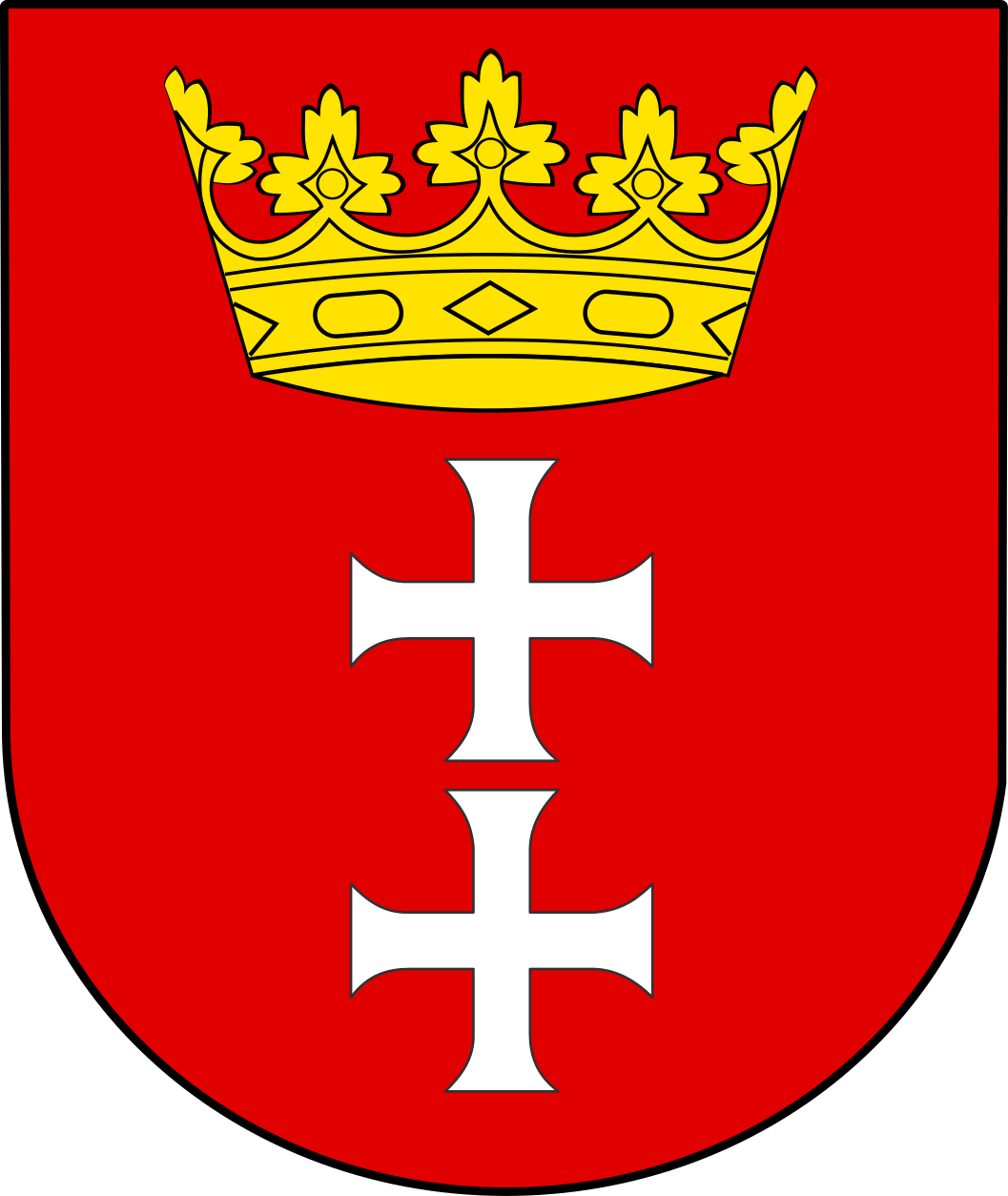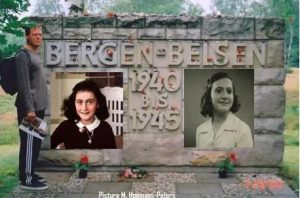Seyss-Inquart, Arthur, born 22-07-1892, as Artur Zajtich in Stannern, Moravië, Austria-Hungary  to the ethnic Czech school principal Emil Zajtich and his German-speaking wife Auguste Hýrenbach. The family moved to Vienna in 1907 where his father had the surname Zajtich changed to Seyss-Inquart.. Seyss-Inquart later went to study law at the University of Vienna. At the beginning of World War I in August 1914 Seyss-Inquart enlisted with the Austrian Army and was given a commission with the Tyrolean Kaiserjäger
to the ethnic Czech school principal Emil Zajtich and his German-speaking wife Auguste Hýrenbach. The family moved to Vienna in 1907 where his father had the surname Zajtich changed to Seyss-Inquart.. Seyss-Inquart later went to study law at the University of Vienna. At the beginning of World War I in August 1914 Seyss-Inquart enlisted with the Austrian Army and was given a commission with the Tyrolean Kaiserjäger  , subsequently serving in Russia, Romania and Italy. He was decorated for bravery on a number of occasions and while recovering from wounds
, subsequently serving in Russia, Romania and Italy. He was decorated for bravery on a number of occasions and while recovering from wounds  in 1917, which causing him to be limp for the rest of his life. He completed his final examinations for his degree. Seyss-Inquart had five older siblings: Hedwig (born 1881), Richard (born 3 April 1883, became a Catholic priest, but left the Church and ministry, married in civil ceremony and became Oberregierungsrat and prison superior by 1940 in the Ostmark, Irene (born 1885), Henriette (born 1887) and Robert (born 1891). In 1911, Seyss-Inquart met Gertrud Maschka
in 1917, which causing him to be limp for the rest of his life. He completed his final examinations for his degree. Seyss-Inquart had five older siblings: Hedwig (born 1881), Richard (born 3 April 1883, became a Catholic priest, but left the Church and ministry, married in civil ceremony and became Oberregierungsrat and prison superior by 1940 in the Ostmark, Irene (born 1885), Henriette (born 1887) and Robert (born 1891). In 1911, Seyss-Inquart met Gertrud Maschka
 to the ethnic Czech school principal Emil Zajtich and his German-speaking wife Auguste Hýrenbach. The family moved to Vienna in 1907 where his father had the surname Zajtich changed to Seyss-Inquart.. Seyss-Inquart later went to study law at the University of Vienna. At the beginning of World War I in August 1914 Seyss-Inquart enlisted with the Austrian Army and was given a commission with the Tyrolean Kaiserjäger
to the ethnic Czech school principal Emil Zajtich and his German-speaking wife Auguste Hýrenbach. The family moved to Vienna in 1907 where his father had the surname Zajtich changed to Seyss-Inquart.. Seyss-Inquart later went to study law at the University of Vienna. At the beginning of World War I in August 1914 Seyss-Inquart enlisted with the Austrian Army and was given a commission with the Tyrolean Kaiserjäger  , subsequently serving in Russia, Romania and Italy. He was decorated for bravery on a number of occasions and while recovering from wounds
, subsequently serving in Russia, Romania and Italy. He was decorated for bravery on a number of occasions and while recovering from wounds  in 1917, which causing him to be limp for the rest of his life. He completed his final examinations for his degree. Seyss-Inquart had five older siblings: Hedwig (born 1881), Richard (born 3 April 1883, became a Catholic priest, but left the Church and ministry, married in civil ceremony and became Oberregierungsrat and prison superior by 1940 in the Ostmark, Irene (born 1885), Henriette (born 1887) and Robert (born 1891). In 1911, Seyss-Inquart met Gertrud Maschka
in 1917, which causing him to be limp for the rest of his life. He completed his final examinations for his degree. Seyss-Inquart had five older siblings: Hedwig (born 1881), Richard (born 3 April 1883, became a Catholic priest, but left the Church and ministry, married in civil ceremony and became Oberregierungsrat and prison superior by 1940 in the Ostmark, Irene (born 1885), Henriette (born 1887) and Robert (born 1891). In 1911, Seyss-Inquart met Gertrud Maschka

 . The couple married in 1916 and had three children: Ingeborg Caroline Auguste Seyss-Inquart (born 18-09-1917), Richard Seyss-Inquart (born 22-08-1921) and Dorothea Seyss-Inquart (born 07-05-1928). He went into law after the war and in 1921 set up his own practice. During the early years of the Austrian First Republic, he was close to the Vaterländische Front. A successful lawyer, he was invited to join the cabinet of Chancellor Engelbert Dollfuss in 1933. Following Engelbert Dollfus‘s
. The couple married in 1916 and had three children: Ingeborg Caroline Auguste Seyss-Inquart (born 18-09-1917), Richard Seyss-Inquart (born 22-08-1921) and Dorothea Seyss-Inquart (born 07-05-1928). He went into law after the war and in 1921 set up his own practice. During the early years of the Austrian First Republic, he was close to the Vaterländische Front. A successful lawyer, he was invited to join the cabinet of Chancellor Engelbert Dollfuss in 1933. Following Engelbert Dollfus‘s
 Schuschnigg died age 79, on 18-11-1977. Seyss Inquart was not initially a member of the Austrian National Socialist party, though he was sympathetic to many of their views and actions. By 1938, however, Seyss-Inquart knew which way the political wind was blowing and became a respectable front man for the Austrian National Socialists. In February 1938, Seyss-Inquart was appointed Minister of the Interior by Schuschnigg, after Adolf Hitler had threatened Schuschnigg with military actions against Austria in the event of non-compliance. On 11-03-1938, faced with a German invasion aimed at preventing a plebiscite of independence, Schuschnigg resigned as Austrian Chancellor and Seyss-Inquart was reluctantly appointed to the position by Austrian President Wilhelm Miklas
Schuschnigg died age 79, on 18-11-1977. Seyss Inquart was not initially a member of the Austrian National Socialist party, though he was sympathetic to many of their views and actions. By 1938, however, Seyss-Inquart knew which way the political wind was blowing and became a respectable front man for the Austrian National Socialists. In February 1938, Seyss-Inquart was appointed Minister of the Interior by Schuschnigg, after Adolf Hitler had threatened Schuschnigg with military actions against Austria in the event of non-compliance. On 11-03-1938, faced with a German invasion aimed at preventing a plebiscite of independence, Schuschnigg resigned as Austrian Chancellor and Seyss-Inquart was reluctantly appointed to the position by Austrian President Wilhelm Miklas

 On the next day German troops crossed the border of Austria, at the telegraphed invitation of Seyss-Inquart, the latter communiqué having been arranged after the troops had begun to march, so as to justify the action in the eyes of the international community. Before his triumphant entry into Vienna, Adolf Hitler had planned to leave Austria as a suppliant state, with an independent but loyal government. He was carried away, however, by the wild reception given to the German army by the majority of the Austrian population, and shortly decreed that Austria would be incorporated into the Third Reich as the province of Ostmark, see Anschluss. Only then, on 13-03-1938, did Seyss-Inquart join the National Socialist party Seyss-Inquart drafted the legislative act reducing Austria to a province of Germany and signed it into law on 13 March.
On the next day German troops crossed the border of Austria, at the telegraphed invitation of Seyss-Inquart, the latter communiqué having been arranged after the troops had begun to march, so as to justify the action in the eyes of the international community. Before his triumphant entry into Vienna, Adolf Hitler had planned to leave Austria as a suppliant state, with an independent but loyal government. He was carried away, however, by the wild reception given to the German army by the majority of the Austrian population, and shortly decreed that Austria would be incorporated into the Third Reich as the province of Ostmark, see Anschluss. Only then, on 13-03-1938, did Seyss-Inquart join the National Socialist party Seyss-Inquart drafted the legislative act reducing Austria to a province of Germany and signed it into law on 13 March.

 With Hitler’s approval he remained head, Reichsstatthalter of the newly named Ostmark, with Chief of the Reichssicherheitshauptamt, Ernst Kaltenbrunner
With Hitler’s approval he remained head, Reichsstatthalter of the newly named Ostmark, with Chief of the Reichssicherheitshauptamt, Ernst Kaltenbrunner 
 his chief minister and Josef Burckel
his chief minister and Josef Burckel  he committed suicide age 49 on 28-09-1944 in Neustadt, as Commissioner for the Reunion of Austria, concerned with the “Jewish Question”. Seyss-Inquart also received an honorary SS rank of Gruppenführer
he committed suicide age 49 on 28-09-1944 in Neustadt, as Commissioner for the Reunion of Austria, concerned with the “Jewish Question”. Seyss-Inquart also received an honorary SS rank of Gruppenführer  and in May 1939 he was made a Minister without portfolio in Hitler’s cabinet. Following the invasion of Poland, Seyss-Inquart became administrative chief for Southern Poland
and in May 1939 he was made a Minister without portfolio in Hitler’s cabinet. Following the invasion of Poland, Seyss-Inquart became administrative chief for Southern Poland
 , but did not take up that post before the General Government was created, in which he became a deputy to the Governor General Hans Frank.
, but did not take up that post before the General Government was created, in which he became a deputy to the Governor General Hans Frank. 
 It is claimed that he was involved in the movement of Polish Jews into ghettos, in the seizure of strategic supplies and in the “extraordinary pacification” of the resistance movement. Following the capitulation of the Low Countries Seyss-Inquart was appointed Reichskommissar for the Occupied Netherlands in May 1940, Jan Ackermans
It is claimed that he was involved in the movement of Polish Jews into ghettos, in the seizure of strategic supplies and in the “extraordinary pacification” of the resistance movement. Following the capitulation of the Low Countries Seyss-Inquart was appointed Reichskommissar for the Occupied Netherlands in May 1940, Jan Ackermans
 charged with directing the civil administration, with creating close economic collaboration with Germany and with defending the interests of the Reich. He supported the Dutch NSB
charged with directing the civil administration, with creating close economic collaboration with Germany and with defending the interests of the Reich. He supported the Dutch NSB  and allowed them to create a paramilitary Landwacht
and allowed them to create a paramilitary Landwacht  , which acted as an auxiliary police force. Other political parties were banned in late 1941 and many former government officials were imprisoned at Sint-Michielsgestel. The administration of the country was controlled by Seyss-Inquart himself and he answered directly to Hitler. He oversaw the politicization of cultural groups “right down to the chess players’ club” through the Nederlandsche Kultuurkamer and set up a number of other politicized associations. He introduced measures to combat resistance and when a widespread strike took place in Amsterdam, Arnhem
, which acted as an auxiliary police force. Other political parties were banned in late 1941 and many former government officials were imprisoned at Sint-Michielsgestel. The administration of the country was controlled by Seyss-Inquart himself and he answered directly to Hitler. He oversaw the politicization of cultural groups “right down to the chess players’ club” through the Nederlandsche Kultuurkamer and set up a number of other politicized associations. He introduced measures to combat resistance and when a widespread strike took place in Amsterdam, Arnhem and Hilversum in May 1943 special summary court-martial procedures were brought in and a collective fine of 18 million guilders was imposed. Up until the liberation, Seyss-Inquart condoned the execution of around 800 people, although some reports put this total at over 1,500
and Hilversum in May 1943 special summary court-martial procedures were brought in and a collective fine of 18 million guilders was imposed. Up until the liberation, Seyss-Inquart condoned the execution of around 800 people, although some reports put this total at over 1,500  , including the executions of people under the so-called “Hostage Law”, the death of political prisoners who were close to being liberated, the Putten incident and the reprisal executions of 117 Dutchmen for the attack on SS and Police Leader Hanns Albin Rauter
, including the executions of people under the so-called “Hostage Law”, the death of political prisoners who were close to being liberated, the Putten incident and the reprisal executions of 117 Dutchmen for the attack on SS and Police Leader Hanns Albin Rauter  and General der Flieger, Friedrich Christiansen.
and General der Flieger, Friedrich Christiansen.
 Rauter was executed age 54, on 25-03-1949. Although the majority of Seyss-Inquart’s powers were transferred to the military commander in the Netherlands and the Gestapo in July 1944, he remained a force to be reckoned with. There were two small concentration camps in the Netherlands, KZ Herzogenbusch near Vught, Kamp Amersfoort near Amersfoort, and a “Jewish assembly camp” at (camp) Westerbork (see Anna Frank)
Rauter was executed age 54, on 25-03-1949. Although the majority of Seyss-Inquart’s powers were transferred to the military commander in the Netherlands and the Gestapo in July 1944, he remained a force to be reckoned with. There were two small concentration camps in the Netherlands, KZ Herzogenbusch near Vught, Kamp Amersfoort near Amersfoort, and a “Jewish assembly camp” at (camp) Westerbork (see Anna Frank)
 ; there were a number of other camps variously controlled by the military, the police, the SS or Seyss-lnquart’s administration. These included a “voluntary labour recruitment” camp at Ommen (Camp Erika). In total around 530,000 Dutch civilians forcibly worked for the Germans, of whom 250,000 were sent to factories in Germany. There was an unsuccessful attempt by Seyss-Inquart to send only workers aged 21 to 23 to Germany, and he refused demands in 1944 for a further 250,000 Dutch workers and in that year sent only 12,000 people. Seyss-Inquart was an unwavering anti-Semite: within a few months of his arrival in the Netherlands, he took measures to remove Jews from the government, the press and leading positions in industry. When Hitler committed suicide in April 1945, Seyss-Inquart declared the setting-up of a new German government under Admiral Karl Dönitz,
; there were a number of other camps variously controlled by the military, the police, the SS or Seyss-lnquart’s administration. These included a “voluntary labour recruitment” camp at Ommen (Camp Erika). In total around 530,000 Dutch civilians forcibly worked for the Germans, of whom 250,000 were sent to factories in Germany. There was an unsuccessful attempt by Seyss-Inquart to send only workers aged 21 to 23 to Germany, and he refused demands in 1944 for a further 250,000 Dutch workers and in that year sent only 12,000 people. Seyss-Inquart was an unwavering anti-Semite: within a few months of his arrival in the Netherlands, he took measures to remove Jews from the government, the press and leading positions in industry. When Hitler committed suicide in April 1945, Seyss-Inquart declared the setting-up of a new German government under Admiral Karl Dönitz,
 who had long since lost Hitler’s favor. It was a tribute to the high regard Hitler felt for his Austrian comrade, at a time when he was rapidly disowning or being abandoned by so many of the other key lieutenants of the Third Reich. Unsurprisingly, at such a late stage in the war, Seyss-Inquart failed to achieve anything in his new office, and was captured shortly before the end of hostilities.
who had long since lost Hitler’s favor. It was a tribute to the high regard Hitler felt for his Austrian comrade, at a time when he was rapidly disowning or being abandoned by so many of the other key lieutenants of the Third Reich. Unsurprisingly, at such a late stage in the war, Seyss-Inquart failed to achieve anything in his new office, and was captured shortly before the end of hostilities. 
Death and burial ground of Seyss-Inquart, Arthur
The Dönitz government lasted no more than 20 days. At the Nuremberg Trials,




 Seyss-Inquart was defended by Gustav Steinbauer
Seyss-Inquart was defended by Gustav Steinbauer  and faced charges of conspiracy to commit crimes against peace; planning, initiating and waging wars of aggression; war crimes; and crimes against humanity. During the trial, Gustave Gilbert
and faced charges of conspiracy to commit crimes against peace; planning, initiating and waging wars of aggression; war crimes; and crimes against humanity. During the trial, Gustave Gilbert  , an American army psychologist, was allowed to examine the Nazi leaders who were tried at Nuremberg for war crimes. Among other tests, a German version of the Wechsler-Bellevue IQ test was administered. Arthur Seyss-Inquart scored 141, the second highest among the Nazi leaders tested, behind Hjalmar Schacht.
, an American army psychologist, was allowed to examine the Nazi leaders who were tried at Nuremberg for war crimes. Among other tests, a German version of the Wechsler-Bellevue IQ test was administered. Arthur Seyss-Inquart scored 141, the second highest among the Nazi leaders tested, behind Hjalmar Schacht.  Seyss-Inquart was found guilty of all charges, save conspiracy and sentenced to death by hanging. Upon hearing of his death sentence, Seyss-Inquart was fatalistic: “Death by hanging…well, in view of the whole situation, I never expected anything different. It’s all right.”
Seyss-Inquart was found guilty of all charges, save conspiracy and sentenced to death by hanging. Upon hearing of his death sentence, Seyss-Inquart was fatalistic: “Death by hanging…well, in view of the whole situation, I never expected anything different. It’s all right.”

 He was hanged on 16-10-1946, at the age of 54, by the U.S hangman John Chris Woods together with ten other Nuremberg defendants, Julius Streicher, Joachim von Ribbentrop, Wilhelm Keitel, Wilhelm Frick, Ernst Kaltenbrunner, Alfred Rosenberg, Ernst “Fritz” Sauckel and Hans Frank. Seyss Inquart was the last to mount the scaffold and his last words were “I hope that this execution is the last act of the tragedy of the Second World War and that the lesson taken from this World War will be that peace and understanding should exist between peoples. I believe in Germany.” Before his execution, Seyss-Inquart had returned to Catholicism, receiving absolution in the sacrament of confession from prison chaplain Father Bruno Spitzl.
He was hanged on 16-10-1946, at the age of 54, by the U.S hangman John Chris Woods together with ten other Nuremberg defendants, Julius Streicher, Joachim von Ribbentrop, Wilhelm Keitel, Wilhelm Frick, Ernst Kaltenbrunner, Alfred Rosenberg, Ernst “Fritz” Sauckel and Hans Frank. Seyss Inquart was the last to mount the scaffold and his last words were “I hope that this execution is the last act of the tragedy of the Second World War and that the lesson taken from this World War will be that peace and understanding should exist between peoples. I believe in Germany.” Before his execution, Seyss-Inquart had returned to Catholicism, receiving absolution in the sacrament of confession from prison chaplain Father Bruno Spitzl. Seyss Inquart and the other were secretly in coffins transferred in Army trucks to the Ostfriedhof, Eastern Cemetery of Munich, on 16-10-1946 and cremated.
Seyss Inquart and the other were secretly in coffins transferred in Army trucks to the Ostfriedhof, Eastern Cemetery of Munich, on 16-10-1946 and cremated.  The coffins had faked names and they gave the fanatic anti Jewish Julius Streicher’s coffin ironical a Jewish name. The same night four Generals, an American, an Englishman, a Frenchman and a Russian, were secretly driven straight to the closest bridge in Munich, the Reichenbachbrücke over the river Isar and they scattered the ashes downstream.
The coffins had faked names and they gave the fanatic anti Jewish Julius Streicher’s coffin ironical a Jewish name. The same night four Generals, an American, an Englishman, a Frenchman and a Russian, were secretly driven straight to the closest bridge in Munich, the Reichenbachbrücke over the river Isar and they scattered the ashes downstream.













 murder in 1934, he became a State Councilor from 1937 under
murder in 1934, he became a State Councilor from 1937 under 



 (see
(see 
 in which he was to act as the new Foreign Minister, replacing
in which he was to act as the new Foreign Minister, replacing 








Leave a Reply